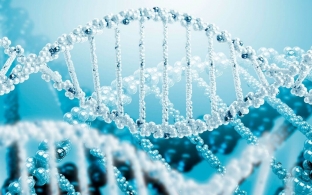The body and the entire human body has a cellular structure. In its structure, human cells have common features with each other. They are interconnected by an intercellular substance that supplies the cell with nutrition and oxygen. Cells are combined into tissues, tissues – to the organs, and the organs – into entire structures (bones, skin, brain, and so on). In the body, cells perform various functions and tasks: growth and division, metabolism, irritability, transfer of genetic information, adaptation to changes in the environment…
The structure of the human cell. Foundation of Foundations
A thin cell membrane surrounds each cell, which isolates it from the external environment and regulates the penetration of various substances into it. A cell filled with a furnace of cytoplasm, into which cell organelles (or organoids) are immersed: mitochondria – power generators; the Golgi complex, where a variety of biochemical reactions occur; vacuoles and endoplasmic reticulum that transport substances; ribosomes where protein synthesis takes place. The center of the cytoplasm contains a nucleus with long DNA molecules (deoxyribonucleic acid), which carries information about the whole organism.
Human cell:
- What organisms are called multicellular?
- How do cells differ in shape?
- Where is the DNA found?
What organisms are called multicellular?
In unicellular organisms (eg bacteria) all life processes – from nutrition to reproduction – occur inside one cell, and in multicellular organisms (plants, animals, people) the body consists of a huge number of cells that perform different functions and interact with each other. The structure of a human cell has a single plan, in which the commonality of all life processes is visible. various types of cells. They are all descendants of the same zygote and acquire differences as a result of the process of differentiation (the process of the emergence and development of differences between initially homogeneous embryonic cells).
How do cells differ in shape?
The structure of a human cell is determined by its main organelles, and the shape of each type of cell is determined by its functions. Red blood cells, for example, are shaped like a biconcave disk: their surface must absorb as much oxygen as possible. The cells of the epidermis perform a protective function, they are of medium size, oblong-angular shape. Neurons have long processes for the transmission of nerve signals, sperm — a movable tail, and the eggs are large and spherical in shape. The shape of the cells that line the blood vessels, as well as the cells of many other tissues – flattened. Some cells, such as white blood cells, that engulf disease-causing microbes can change shape.
Where is the DNA found?
The structure of a human cell is impossible without deoxyribonucleic acid. DNA is found in the nucleus of every cell. This molecule stores all hereditary information, or the genetic code. It consists of two long molecular chains twisted into a double helix.

They are linked by hydrogen bonds that form between pairs of nitrogenous bases – adenine and thymine, cytosine and guanine. Tightly twisted DNA chains form chromosomes – rod-shaped structures, the number of which in representatives of one species is strictly constant. DNA is necessary to sustain life and plays a huge role in reproduction: it transmits hereditary traits from parents to children.






Add a comment